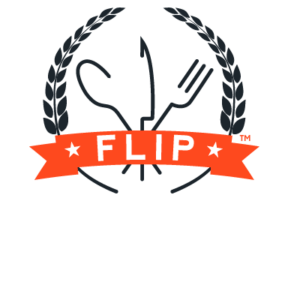Selling farm-to-table foods is a good trend. It’s good to make it possible for more people to eat foods that came fresh from the farm. Not only is this trend healthy and environmentally friendly, but it helps support small businesses and local farms.
However, if this trend is going to succeed at bringing local consumers, chefs, and farmers together, everyone from the consumer to the farmer is going to have to demand greater transparency and honesty about the so-called farm-to-table food on their plate.

Here’s the dirty little secret behind farm to table: it’s often a fiction. Recently, an increasing number of “farm-to-table” restaurants have been caught red-handed serving food that did not come directly from a local farm as they claimed. Some restaurants even use the names of farms that they do not buy food from in their advertising.
One farmer told his story in a recent San Diego Magazine article. A friend showed him a menu from a local restaurant
that claimed the cauliflower for their cauliflower soup came from his farm. He didn’t even sell cauliflower.
Laura Reiley, the food critic for the Tampa Bay Times, recently revealed in this NPR interview that many of the farm-to-table restaurants she had praised for their menu and their quality were actually making false claims about their farm-to-table fare.
The biggest problem that comes with this misrepresentation is that it confirms American’s expectations of cheap food. If they can get supposedly locally sourced meals from a restaurant for such affordable prices, why should they expect to pay more for locally made food from local farms?
This kind of false advertisement is unfair to the best members of the food industry. As San Diego Magazine says, “Farm-to-fable defrauds a few different people. First, it defrauds the customers, who pay more for local, sustainable, organic produce. Restaurants that cheat are preying on food lovers’ good intentions. It also defrauds the local farm, by using its hard-earned ‘brand name’ without paying it, or its workers, a penny. Finally, it defrauds other honest restaurants in the market.”
SO WHAT CAN YOU DO TO PROTECT YOUR NAME FROM BEING APPROPRIATED BY LOCAL RESTAURANTS?
One solution is to stay on the lookout by reading the menus of nearby restaurants to be sure they aren’t using your name to advertise if they haven’t really purchased your product.
If you confront the chef or the restaurant owner about the fraud, they might be less inclined to make false claims.
It also helps to have your friends in the community stand up for you when they suspect that your name might be being misused.
Laura Reiley says that another solution, perhaps that best solution, is in the hands of the consumer: “There’s a little more consumer activism in terms of demanding more transparency in the provenance of where we’re getting our food. When you see those claims on the menu—naturally raised, or heritage

breeds—I think that they should raise a red flag, and you should feel free to ask more questions.”
WHAT CAN YOU DO TO CREATE SAVVIER CONSUMERS?
In order to make a consumer who can be an activist for local farmers, we need to educate the public. As the San Diego Magazine article says, if more people are aware of what produce is in season and of what produce comes from what area and what farm, they won’t be so easily fooled. This kind of education is especially possible at farmers markets where farmers have the opportunity to speak with consumers face-to-face.
If you sell produce at farmers markets, you might consider distributing a calendar, either in print or online, that shows what foods you sell and when they will be in season.
The truth is that farm-to-table is a term that is often misused, but it is a term with great potential. Farmers, farmers markets, and responsible restaurants are all a part of making farm-to-table a reality and a real movement rather than just a marketing term and a fad.
So thank you to all of the local farmers and food businesses who buy from them. Keep going!
Are you ready for farmers markets season? Find out! Follow our Six Steps to Get Ready for Food Vending Season.

BY LYNDSEY LARSEN
Lyndsey Larsen is the Marketing Manager and writes about business, marketing, entrepreneurship, and insurance.
Lyndsey Larsen is an experienced writer with a background in corporate communications nonprofits, SAAS corporations, and nutraceutical companies. She has previously worked as a journalist for regional and national publications. In her spare time, she enjoys chasing butterflies, rockhounding, and spending time with her two kids in Utah’s mountains or deserts. Find Lyndsey on LinkedIn.


